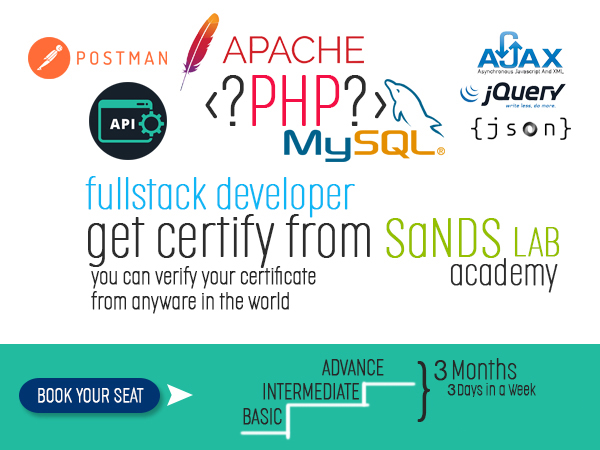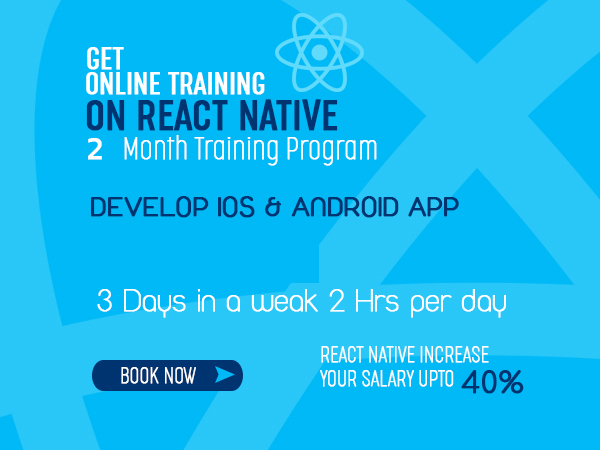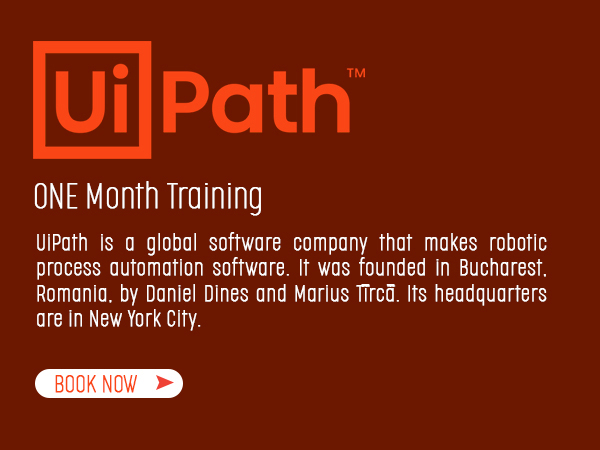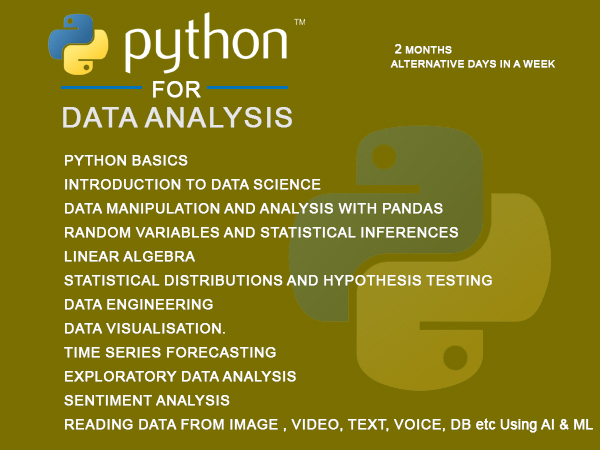We offer a variety of courses covering Web Application Development, Mobile App Development for Android and iOS, and Cloud Server utilization.

LAMP Stack Developer
A LAMP Stack Developer course is designed to provide students with the skills and knowledge required to develop web applications using PHP, MySQL, and related technologies. The course typically covers the entire web application development process, from creating and designing the user interface to managing and maintaining the database.
The course include the following topics:
HTML, CSS, Bootstrap and JavaScript and JQuery: Students will learn the fundamentals of web development, including HTML markup, CSS and Bootstrap styling, and JavaScript and JQuery programming. They will also learn how to use popular front-end frameworks, such as Bootstrap or Foundation, to create responsive and mobile-friendly web interfaces.
PHP programming: Students will learn the basics of PHP programming, including data types, variables, operators, loops, functions and Class. They will also learn how to use PHP to create dynamic web pages, process form data, and interact with MySQL databases.
MySQL database management: Students will learn the basics of database design and management using MySQL. They will learn how to create database tables, insert data, retrieve data, and update or delete records. They will also learn how to use SQL queries to perform advanced data manipulations using Store Prosedure , Functions & Triggers.
Server-side programming: Students will learn how to use PHP to create server-side scripts that can handle user input and interact with the database. They will also learn how to use PHP MVC frameworks, such as Laravel or CodeIgniter, to streamline their development process and create robust and scalable web applications.
Security and performance: Students will learn how to design and implement secure and performant web applications. They will learn about common security vulnerabilities, such as SQL injection and cross-site scripting, and how to prevent them. They will also learn how to optimize their code and database queries to improve the performance of their applications.
Upon completion of the course, students should be able to develop full-stack web applications using PHP and MySQL, from designing the user interface to managing the database. They should also have a good understanding of web development best practices, security considerations, and performance optimization techniques with the latest technologies available in the Industry.

React Native
A React Native course is designed to provide students with the skills and knowledge required to develop mobile applications using React Native, a popular open-source mobile application framework. React Native allows developers to build native mobile applications for iOS and Android platforms using a single codebase, making it a popular choice for mobile application development.
The course typically covers the following topics:
React Native fundamentals: Students will learn the basics of React Native, including components, props, state, and styling. They will also learn how to use the Flexbox layout system to create responsive and dynamic user interfaces.
Navigation and routing: Students will learn how to implement navigation and routing in their React Native applications, allowing users to move between screens and components.
Data management: Students will learn how to manage data in their React Native applications, including how to fetch data from APIs and how to store data locally using technologies like AsyncStorage.
Third-party libraries: Students will learn how to integrate third-party libraries and modules into their React Native applications, including libraries for authentication, analytics, and push notifications.
Debugging and testing: Students will learn how to use debugging and testing tools to ensure the quality and reliability of their React Native applications.
Advanced topics: Depending on the course, students may also learn about more advanced topics, such as animations, performance optimization, and building custom React Native components.
Flux architecture: This architecture is based on a unidirectional data flow and includes three main components: actions, stores, and views. Actions trigger changes in the app's state, which are managed by the stores. Views subscribe to the stores and render the updated state to the user interface.
Upon completion of the course, students should be able to develop mobile applications using React Native, from designing the user interface to managing data and integrating third-party libraries. They should also have a good understanding of mobile application development best practices, debugging and testing techniques, and advanced topics in React Native development.

UI Path for Robotic Process
UI Path training is designed to provide students with the skills and knowledge required to develop and implement Robotic Process Automation (RPA) solutions using the UI Path platform. RPA involves automating repetitive and mundane tasks using software robots or bots, which can improve efficiency, accuracy, and productivity in various business processes.
The course typically covers the following topics:
Introduction to RPA and UI Path: Students will learn about the basics of RPA, its benefits, and use cases. They will also be introduced to the UI Path platform and its features.
UI Path Studio: Students will learn how to use the UI Path Studio, a visual design environment that allows developers to create, test, and deploy RPA solutions. They will learn about UI Path activities, variables, and data types, and how to use them to create workflows and automate tasks.
UI Path Orchestrator: Students will learn how to use the UI Path Orchestrator, a web-based platform that allows developers to manage and monitor their RPA solutions. They will learn how to deploy, schedule, and run bots, and how to monitor their performance and troubleshoot issues.
Advanced topics: Depending on the course, students may also learn about more advanced topics, such as automating Citrix or virtual environments, using machine learning and artificial intelligence in RPA, and integrating UI Path with other systems and technologies.
Upon completion of the course, students should be able to develop and implement RPA solutions using the UI Path platform, from designing workflows to deploying and managing bots. They should also have a good understanding of RPA best practices, advanced topics, and how RPA can be applied to various industries and business processes.

AWS Cloud Training
AWS Cloud training is designed to provide students with the skills and knowledge required to design, deploy, and manage cloud-based solutions using Amazon Web Services (AWS). AWS is one of the most widely used cloud computing platforms, offering a wide range of services, including computing, storage, database, and analytics, among others.
The course typically covers the following topics:
AWS Fundamentals: Students will learn about the basics of cloud computing, including its benefits, architectures, and service models. They will also be introduced to the AWS platform and its services.
AWS Services: Students will learn about the various AWS services, including compute, storage, database, networking, and security. They will learn how to select the appropriate AWS service for a given use case, and how to configure and deploy them.
AWS Architecture and Design: Students will learn how to design and implement AWS-based solutions, including architecture patterns, cost optimization, and security best practices.
AWS Management and Monitoring: Students will learn how to manage and monitor AWS-based solutions, including topics such as backup and recovery, resource optimization, and monitoring and logging.
AWS DevOps: Students will learn how to use AWS DevOps tools, such as CodeDeploy, CodePipeline, and CodeCommit, to automate software delivery processes and deploy applications to the cloud.
Advanced topics: Depending on the course, students may also learn about more advanced topics, such as AWS Machine Learning, Big Data and Analytics, and Serverless Computing.
Upon completion of the course, students should be able to design, deploy, and manage cloud-based solutions using AWS, from selecting the appropriate services to implementing cost-effective and secure architectures. They should also have a good understanding of AWS best practices, advanced topics, and how to apply AWS to real-world scenarios.

AZURE Cloud Training
Azure Cloud training is designed to provide students with the skills and knowledge required to design, deploy, and manage cloud-based solutions using Microsoft Azure. Azure is a popular cloud computing platform that offers a wide range of services, including compute, storage, database, networking, and security, among others.
The course typically covers the following topics:
Azure Fundamentals: Students will learn about the basics of cloud computing, including its benefits, architectures, and service models. They will also be introduced to the Azure platform and its services.
Azure Services: Students will learn about the various Azure services, including compute, storage, database, networking, and security. They will learn how to select the appropriate Azure service for a given use case, and how to configure and deploy them.
Azure Architecture and Design: Students will learn how to design and implement Azure-based solutions, including architecture patterns, cost optimization, and security best practices.
Azure Management and Monitoring: Students will learn how to manage and monitor Azure-based solutions, including topics such as backup and recovery, resource optimization, and monitoring and logging.
Azure DevOps: Students will learn how to use Azure DevOps tools, such as Azure DevOps Services and Azure DevTest Labs, to automate software delivery processes and deploy applications to the cloud.
Advanced topics: Depending on the course, students may also learn about more advanced topics, such as Azure Machine Learning, Big Data and Analytics, and Serverless Computing.
Upon completion of the course, students should be able to design, deploy, and manage cloud-based solutions using Azure, from selecting the appropriate services to implementing cost-effective and secure architectures. They should also have a good understanding of Azure best practices, advanced topics, and how to apply Azure to real-world scenarios.

Python
Welcome to the Python for Data Analysis course! In this course, we will explore how Python can be used as a powerful tool for data analysis and manipulation. Whether you're new to Python or already have some programming experience, this course will provide you with the essential knowledge and skills to effectively work with data using Python. Data analysis is a crucial component of various fields, including business, finance, healthcare, and scientific research. Python, with its rich ecosystem of libraries and tools, has become one of the most popular programming languages for data analysis. It offers a wide range of libraries such as NumPy, pandas, and Matplotlib, which provide efficient data structures, data manipulation capabilities, and powerful visualization options. Throughout this course, we will cover fundamental concepts and techniques used in data analysis, including:
1. Introduction to Python: We will start by familiarizing ourselves with the Python programming language, its syntax, and basic data types. We'll also explore how to install Python and set up the development environment.
2. Data Manipulation with pandas: pandas is a powerful library for data manipulation and analysis. We will learn how to load, clean, transform, and merge datasets using pandas' data structures such as Series and DataFrame. We'll cover techniques for indexing, filtering, and handling missing data.
3. Exploratory Data Analysis: We will dive into exploratory data analysis techniques, which involve summarizing and visualizing data to gain insights. We'll explore various statistical measures, create visualizations using Matplotlib and Seaborn, and learn how to customize plots to effectively communicate information.
4. Working with Real-world Datasets: We'll work with real-world datasets to apply the concepts and techniques learned. We'll learn how to read data from different file formats (CSV, Excel, JSON, Image, Video, Audio, etc.) and perform data cleaning, transformation, and aggregation tasks.
5. Data Visualization: Effective data visualization is crucial for communicating insights and findings. We'll explore advanced visualization techniques using libraries like Matplotlib, Seaborn, and Plotly, and learn how to create interactive visualizations to enhance data exploration.
6. Introduction to NumPy: NumPy is a fundamental library for numerical computing in Python. We'll learn how to work with arrays, perform mathematical operations, and leverage NumPy's powerful array manipulation capabilities.
7. Introduction to Machine Learning: We'll touch upon the basics of machine learning and explore how to apply simple machine learning algorithms using scikit-learn, a popular machine learning library in Python.
By the end of this course, you will have a solid foundation in Python for data analysis, AI and ML Techniques and be equipped with the necessary skills to work with real-world datasets, perform exploratory data analysis, and create meaningful visualizations. So, let's dive into the exciting world of Python for data analysis and get started with the first lesson!


